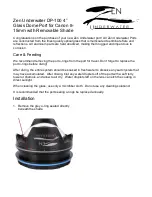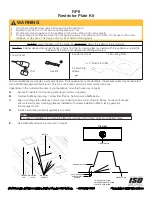
15
1. The number one rule in underwater photography is to eliminate as much
water between the camera and subject as possible. Get as close as you
can to the subject, then use the zoom. If you are using flash for still
photos, subjects beyond 6 feet (1.8m) will not have much color
regardless of strobe power.
2. The camera’s built-in flash is very close to the camera lens. The flash
can light up any suspended particles in the water and they can be
recorded in your picture. This effect is called backscatter. To eliminate as
much backscatter as possible, photograph close or use an external
strobe. Photograph in clear water; do not stir up the sand or silty bottom.
If backscatter becomes a problem in the environment you are
photographing, an external flash will help eliminate much of the
backscatter.
3. Many digital cameras have a slight lag time between when you press
the shutter release button and the camera actually takes the picture.
Hold the camera steady a second or two after pressing the shutter
release button.
4. Do not shoot down on subjects as they will quite often blend into the
background and be difficult to see in the photograph. Shoot subjects
straight on or shoot up at a slight angle using the blue water as a
contrasting background.
7 in. wide x 5 in. high x 5.4 in. deep including controls and lens port.
180mm x 130mm x 140mm.
2.8 lb. (1300g) above water.
Slightly negative buoyancy in fresh water.
Photo Tips
Specifications














































